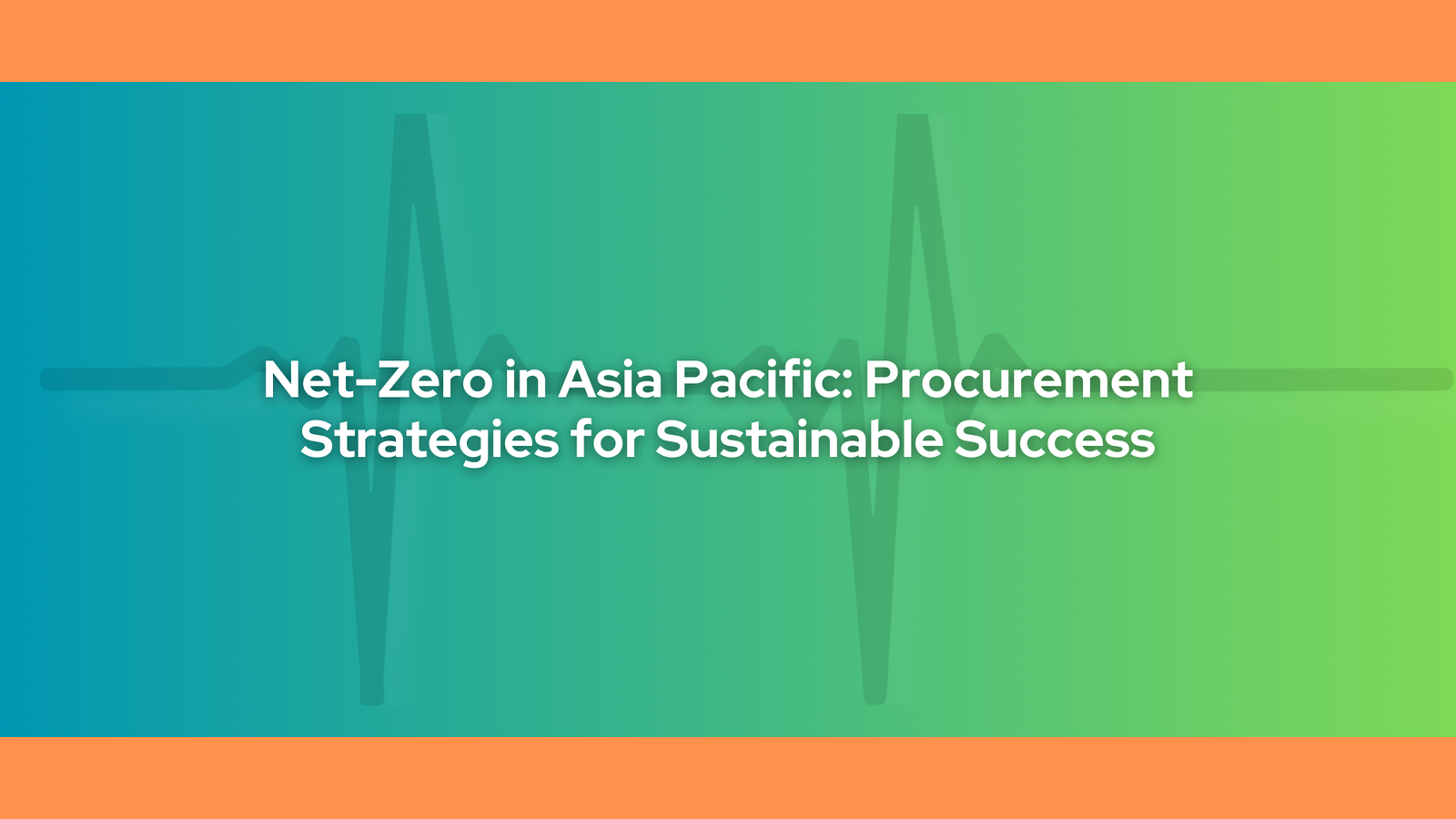
In this year’s assessment by the United Nations, the world’s actions against climate change have yet to progress. According to the report, to achieve the global warming limit of 1.5°C, the countries must lessen their greenhouse gas emissions by 42% by 2030. The Asia-Pacific region, responsible for more than half of the world’s carbon emissions, finds itself at the epicenter of this global climate challenge. This urgency also presents both challenges and huge opportunities. To achieve net-zero goals, the Asia Pacific should consider green and sustainable-driven procurement and supply chain management strategies.
According to a blog post by the Asian Development Bank, the cost of inaction is steep. Inaction on climate change negatively impacts important industries like agriculture and energy. It can also cause long-term economic damage. Investing in net-zero procurement practices for the region could guarantee economic gains and long-term resilience and can help achieve global climate goals.

Procurement specialists are at the center of this change, especially in the public sector. They indirectly impact emissions by choosing suppliers, purchasing materials, and guaranteeing sustainable practices across the supply chain. Their choices and decisions are important, since, according to a World Economic Forum White Paper, public procurement contributes 7.5 billion tonnes of direct or indirect greenhouse gas emissions, or about 15% of global emissions.
Addressing Scope 3 emissions—those produced indirectly by goods and services that are purchased—is also a crucial area. Organizations can use frameworks to monitor and lower these emissions, increasing the accountability and transparency of supply chains.
Procurement choices are also crucial to energy transition initiatives. The Asian Business Review states that for Asia Pacific to reach its 2050 net-zero goals, its investments in sustainable energy technologies must be tripled. In the same article, to achieve its climate goals, Asia Pacific must raise its yearly investments in the energy transition to $2.3 trillion by 2030. Procurement decision-makers can help accelerate these transitions by working with suppliers prioritizing carbon reduction, investing in renewable energy sources, and procuring energy-efficient materials.
According to the Business Times, companies in the Asia Pacific are becoming leaders and innovators in clean technology. Several of these are major businesses in the sector that utilize their supply chain to scale the implementation of clean technology. They also use it to accelerate the pace of cutting-edge technology research and development.

While these practices and strategies could create a ripple effect in improving carbon emissions and help achieve the net-zero goals of the Asia Pacific, reaching this would also come with obstacles. Procurement teams face common challenges such as investment gaps, uneven supplier preparedness, and restricted access to emissions data across international supply chains.
As reported by the Business Times, while 70% of Asian investors, along with 84% of financial managers, “publicly recognize climate as a source of material risks and opportunities,” there are still concerns about climate investing, such as rising interest rates and general economic uncertainty.
Achieving net zero in the Asia Pacific is not impossible; however, in order to achieve this goal, there must be cooperation of the whole region and the utilization of technology and artificial intelligence. The region must also hasten its actions to solve this urgent global predicament.